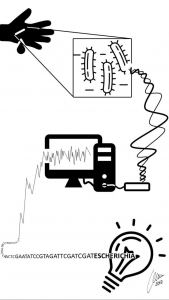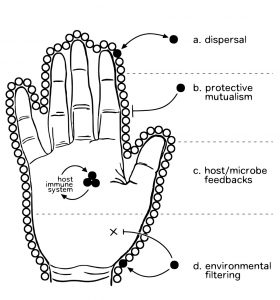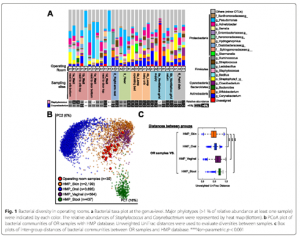OK so this is based on a press release so it should be taken with a grain of salt and such. But it is interesting, and gross too, and about microbiology of the built environment. Skin squames contribute to ammonia and volatile fatty acid production from bacteria colonizing in air-cooling units with odor complaints Source: …
We are a research group working on Genetics in a Vet School and closely collaborating with veterinary clinicians and dermatologists. We moved from specific pathogens, such as Leishmania, to specific commensals such as Demodex… and finally ended studying the whole: the skin microbiota on healthy dogs. Vets are always wondering why there are differences among …
(This post was written by Roo Vandegrift at the University of Oregon) I was recently asked to spearhead the writing of a review centered around the interaction between the concept of hygiene and our increasingly nuanced understanding of the human skin microbiome for the Biology and the Built Environment (BioBE) Center at the University of …
New papers on microbes inside homes and musea, drinking water systems, during spa treatment, and in an urban estuary. Indoor air Relative and contextual contribution of different sources to the composition and abundance of indoor air bacteria in residences – Marzia Miletto and Steven E. Lindow – Microbiome (OA) We investigated the source-sink relationships of …
Infants born via c-section have a microbiome community composed mostly of skin bacteria [1-3], but the source of these skin bacteria is unknown. People quickly shed bacteria into their environment, leaving their own bacterial signature in a room within hours [4]. Do hospital operating rooms harbor skin bacteria that could colonize c-section delivered infants? A …
There is an interesting and important paper out in Microbiology: Hand Bacterial Communities Vary Across Two Different Human Populations by Denina Hospodsky, Amy J. Pickering, Timothy R. Julian , Dana Miller, Sisira Gorthala, Alexandria B. Boehm, and Jordan Peccia. This paper is important for many reasons including the following: They found significant variation in the communities found on …
The last of the new Sloan grants is a project called “Transmission and alteration of the human microbiome by urban public transportation systems” which is being managed by Curtis Huttenhower at the Harvard Public School of Health, along with his Co-PI, Jack Spengler. Detailed description below:
A new paper in the Proceedings of the Royal Society B is a bit disconcerting. The paper “Skin as a potential source of infectious foot and mouth disease aerosols” is by Michael Dillon from Lawrence Livermore Labs (I have added the reference to the microBEnet collections at Mendeley and CiteULike). A bit more about the …
A new paper in Applied and Environmental Microbiology is not surprisingly getting a bunch of press “Bacterial Hand Contamination and Transfer after Use of Contaminated Bulk-Soap-Refillable Dispensers” by Zapka et al. I note the article is freely available online. Some of the news stories about this include: Bacteria-Laden Soap Not So Clean : Discovery …



